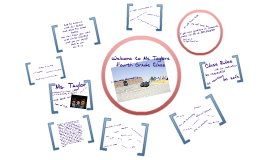Back to School Template
Transcript: Introduction to Back to School Importance of Education Education is foundational for individual empowerment and societal progress. It cultivates critical thinking, enhances skills, and opens doors to economic opportunities, underlining its value as a catalyst for change. Goals for the Upcoming School Year Setting clear objectives such as enhancing student engagement, integrating technology, and promoting inclusivity will define success in the upcoming school year. These goals aim to foster a collaborative learning environment. Current Trends in Education Back to School Template Recent trends emphasize digital learning, personalized curriculums, and STEM education. The shift towards remote learning has also revolutionized traditional educational approaches, making accessibility a priority. Curriculum Integration Creative Design Strategies Aligning Design with Learning Objectives Educational design should prioritize learning objectives, ensuring that visual strategies support pedagogical goals. This alignment enables a more effective learning experience, as students grasp concepts that resonate with their educational needs. Collaborative Learning Environments Visual Themes and Aesthetics Utilizing Color Psychology Incorporating Technology Visual themes create a unified look that can enhance student interest and engagement. Themes that reflect school culture or learning objectives foster a sense of belonging and stimulate creativity in educational settings. Creating collaborative learning environments encourages peer interaction, promoting teamwork and communication skills. Strategies such as group projects and discussions allow students to learn from one another, enriching their educational experience. Color psychology plays a vital role in how students perceive learning materials. Warm colors like red and orange can stimulate energy, while cool colors like blue promote calmness and focus, affecting their overall learning atmosphere. The integration of technology into curriculum design fosters interactive learning environments. Tools such as digital platforms and educational apps create opportunities for students to engage with materials in innovative ways, enhancing comprehension and retention. Engaging Typography Choices Interactive Elements to Enhance Learning Assessing Student Engagement Typography impacts readability and conveys personality in design. Fonts should be clear and accessible; sans-serif typefaces are often preferred in educational contexts for their legibility, promoting better comprehension among students. Incorporating interactive elements, like quizzes and multimedia resources, fosters active participation. Tools such as digital whiteboards and educational apps create a dynamic learning experience, essential for modern education. Regular assessment of student engagement is critical in measuring the effectiveness of curriculum integration. Surveys, observation, and performance metrics enable educators to refine strategies, ensuring they meet the diverse needs of students. A Creative Approach to Education Design Implementation and Feedback Gathering Student and Teacher Input Strategies for Launching the Template Analyzing Outcomes and Improvements Future Updates and Adaptations Adjustments based on feedback and outcome analysis ensure the template remains relevant. Incorporating emerging educational technologies and pedagogical strategies can enhance learning experiences continuously. Collecting feedback through surveys, focus groups, and classroom observations can help understand user experiences. Engagement metrics such as participation rates can also guide refinements to the template. Data analysis of academic performance and engagement levels provides insights into the template’s effectiveness. Regular reviews can identify successful elements and areas needing improvement, ensuring the template meets educational goals. Successful launch strategies involve a clear communication plan, comprehensive training sessions for educators, and a collaborative rollout process. Initial tests in specific classes can provide valuable insights before full implementation.

















